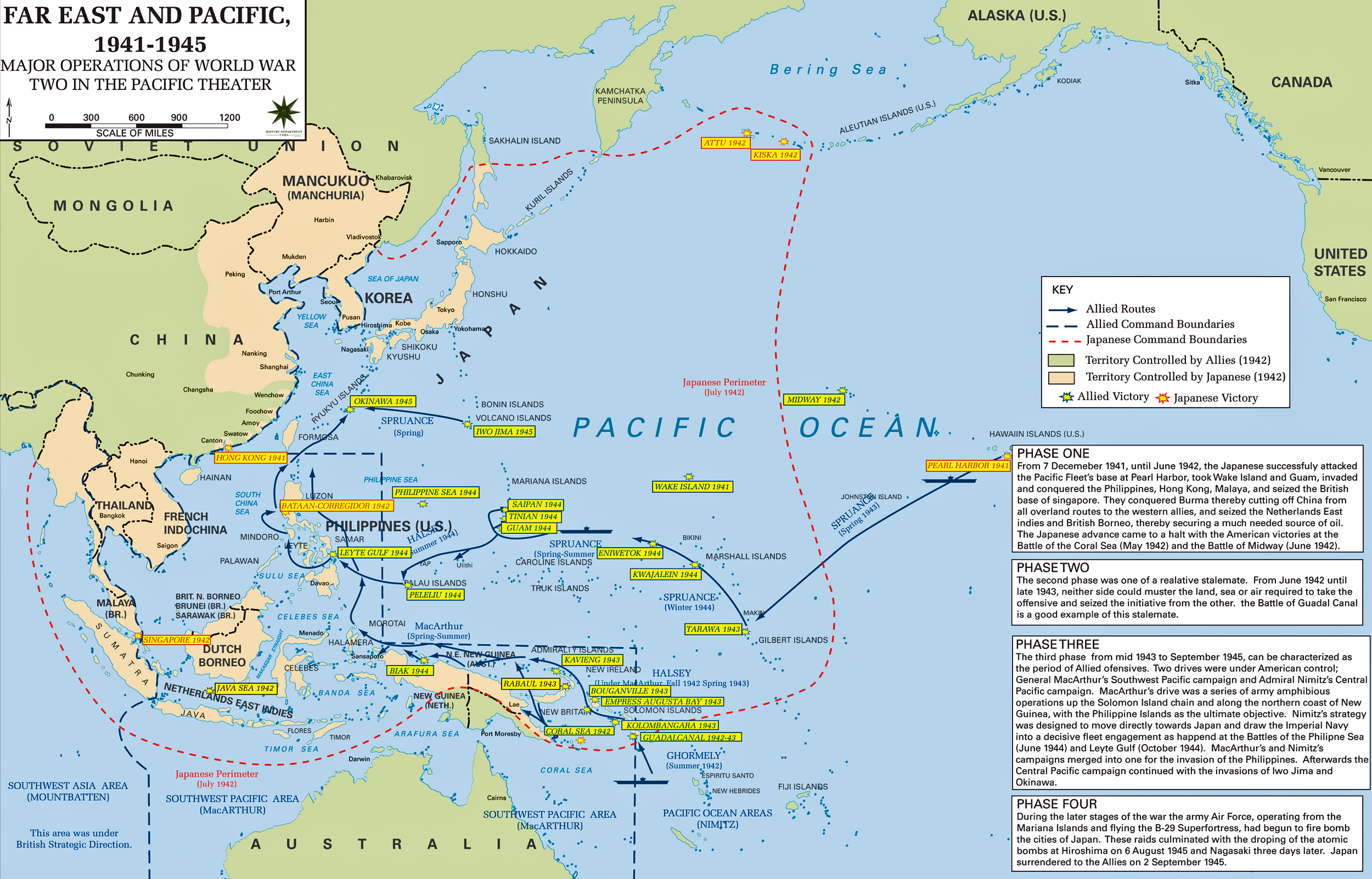Map Description
Historical Map of WWII — Major Operations in Asia and the Pacific 1939-1945
(Go here to see the map of Major Operations in Europe)
Illustrating
- Allied Routes
- Allied Command Boundaries
- Japanese Command Boundaries
- Territory Controlled by Allies (1942)
- Territory Controlled by Japanese (1942)
- Allied Victory
- Japanese Victory
:: Phase One ::
From December 7, 1941, until June 1942, the Japanese successfully attacked the Pacific Fleet's base at
Pearl Harbor
, took Wake Island and Guam,
invaded and conquered the Philippines
, Hong Kong, Malaya, and seized the British base of Singapore. They conquered Burma, thereby cutting
off China from all overland routes to the western allies, and seized the Netherlands' East Indies and
British Borneo, thereby securing a much needed source of oil.
Japanese advance came to a halt with the American victories at the
Battle of the Coral Sea
(May 1942) and the
Battle of Midway
(June 1942.)
:: Phase Two ::
The second phase was one of a relative stalemate. From June 1942 until late 1943, neither side could muster
the land, sea, or air required to take the offensive and seized the initiative from the other. The
Battle of Guadalcanal is a good example of this stalemate.
:: Phase Three ::
The third phase, from mid 1943 to September 1945, can be characterized as the period of Allied offensives.
Two drives were under American control: General MacArthur's Southwest Pacific campaign and Admiral Nimitz's
Central Pacific campaign.
MacArthur's drive was a series of army amphibious operations up the Solomon Island chain and along the northern
coast of New Guinea, with the Philippine Islands as the ultimate objective. Nimitz's strategy was designed to
move directly towards Japan and draw the Imperial Navy into a decisive fleet engagement as happened at the
Battles of the Philippine Sea (June 1944) and Leyte Gulf
(October1944.) MacArthur's and Nimitz's campaigns merged into one for the invasion of the Philippines.
Afterwards the Central Pacific campaign continued with the invasions of Iwo Jima and Okinawa.
:: Phase Four ::
During the later stages of the war, the army Air Force, operating from the Mariana Islands and flying the B-29
Superfortress, had begun to fire-bomb the cities of Japan. These raids culminated with the dropping of
the atomic bombs at Hiroshima on August 6, 1945, and Nagasaki three days later.
Japan surrendered to the Allies on September 2, 1945.
Credits
Courtesy of the United States Military Academy Department of History.
Related Links
About World War 2WWII Timelines
About the Bataan Death March

